11 Best Herbal Tinctures For Hormonal Imbalance
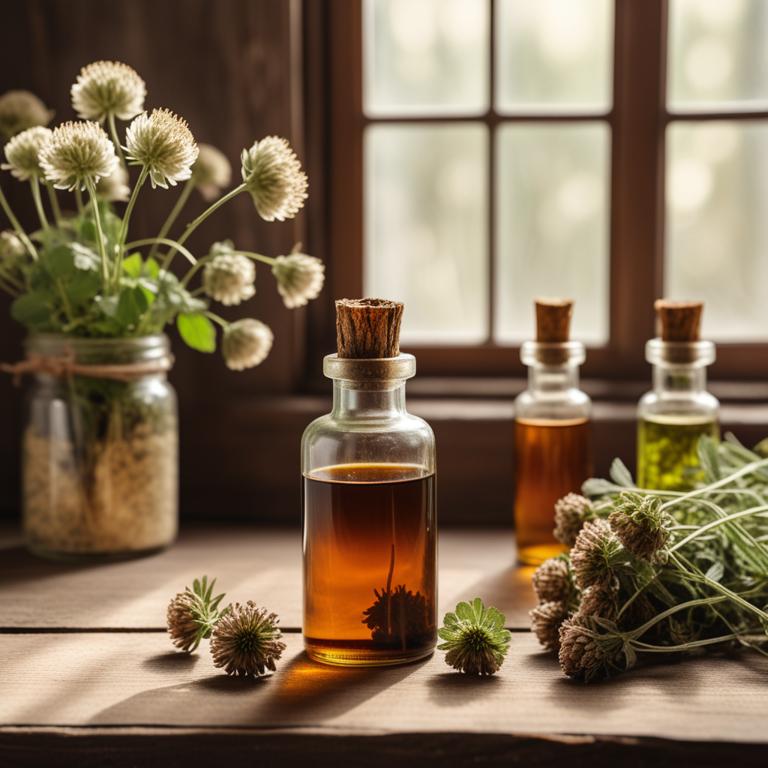
Herbal tinctures for hormonal imbalance are concentrated plant extracts used to restore balance to the endocrine system, alleviating symptoms of hormonal imbalance such as mood swings, irregular periods, and weight gain.
The benefits of using herbal tinctures to treat hormonal imbalance include their ability to regulate menstrual cycles, reduce stress and anxiety, and improve overall hormone production.
Some examples of herbal tinctures used to treat hormonal imbalance include Maca root tincture, which helps regulate estrogen and progesterone levels, Ashwagandha tincture, which reduces cortisol levels and promotes relaxation, and Black cohosh tincture, which alleviates hot flashes and night sweats.
Additionally, other herbal tinctures such as Chasteberry tincture, which supports ovulation and fertility, and Vitex tincture, which regulates menstrual cycles and reduces PMS symptoms, can also be effective in treating hormonal imbalance.
According to "Archives of gynecology and obstetrics", tinctures for hormonal imbalance, which often contain phytoestrogen substances and herbal medicines like passion flower, can be an effective and safe solution to reduce symptoms such as hot flushes, insomnia, fatigue, and irritability, as seen in a study of 60 women who took a combined nutraceutical supplement for 6 months.
Below there's a list of the 11 best herbal tinctures for hormonal imbalance.
- 1. Angelica sinensis tinctures
- 2. Cimicifuga racemosa tinctures
- 3. Hypericum perforatum tinctures
- 4. Silybum marianum tinctures
- 5. Vitex agnus-castus tinctures
- 6. Avena sativa tinctures
- 7. Astragalus membranaceus tinctures
- 8. Curcuma longa tinctures
- 9. Ginkgo biloba tinctures
- 10. Paeonia lactiflora tinctures
- 11. Berberis vulgaris tinctures
Also you may be interested in...
TODAY'S FREE BOUNDLE
Herb Drying Checklist + Herbal Tea Shopping List + Medicinal Herbs Flashcards
Enter you best email address below to receive this bundle (3 product valued $19.95) for FREE + exclusive access to The Aphotecary Letter.
$19.95 -> $0.00
1. Angelica sinensis tinctures
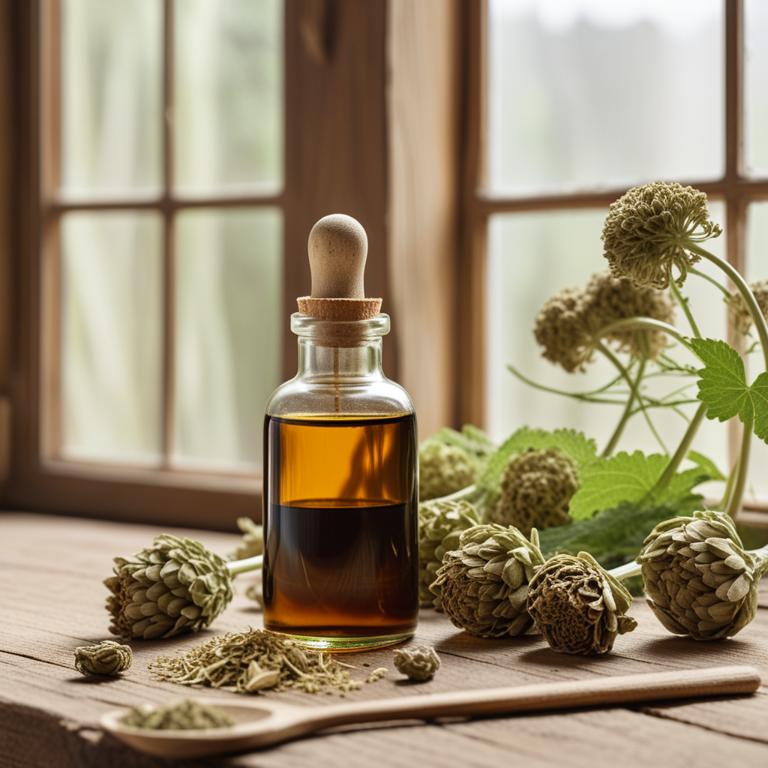
Angelica sinensis tinctures have been traditionally used to treat hormonal imbalance ailments, such as menopausal symptoms and polycystic ovary syndrome (PCOS), due to their estrogenic and anti-inflammatory properties.
The bioactive constituents of Angelica sinensis, including ferulic acid, ligustilide, and butylphthalide, help to regulate hormonal balance by modulating the hypothalamic-pituitary-adrenal axis and reducing inflammation in the body.
By acting as a phytoestrogen, Angelica sinensis tinctures help to alleviate symptoms of hormonal imbalance, including hot flashes, mood swings, and irregular menstrual cycles.
The benefits of using Angelica sinensis tinctures to treat hormonal imbalance ailments include a reduction in symptoms, improved quality of life, and a natural, non-hormonal alternative to conventional treatments.
2. Cimicifuga racemosa tinctures
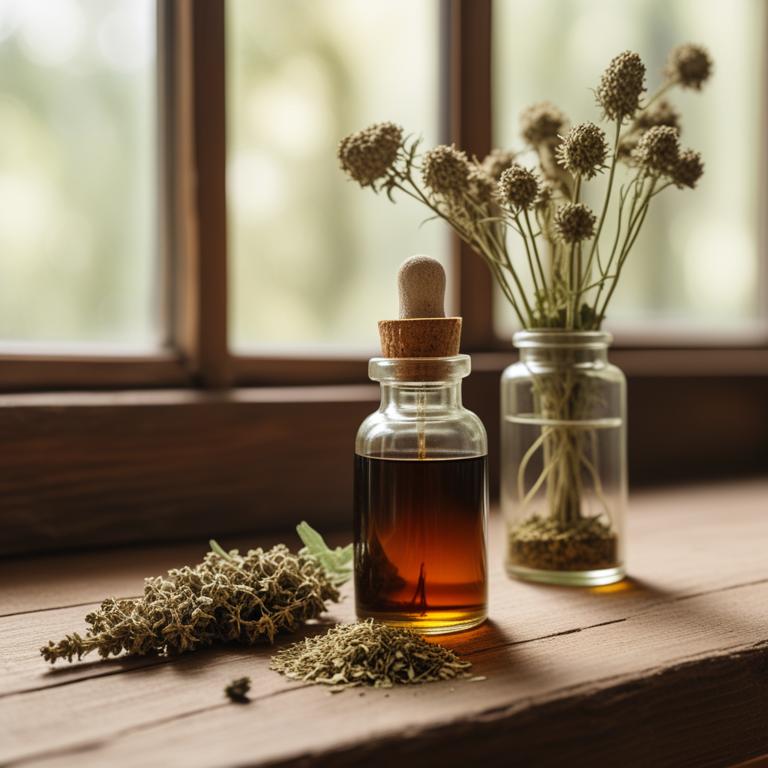
Cimicifuga racemosa tinctures have been traditionally used to treat hormonal imbalance ailments, particularly menopausal symptoms such as hot flashes and mood swings, due to their ability to mimic the effects of estrogen in the body.
The properties of Cimicifuga racemosa tinctures help to balance the body's hormonal levels by acting as a natural estrogen agonist, which in turn helps to alleviate symptoms of hormonal imbalance.
The bioactive constituents of Cimicifuga racemosa tinctures, including sesquiterpenes, phenolic acids, and triterpenoid saponins, are responsible for its therapeutic effects, which help to reduce inflammation, improve mood, and regulate menstrual cycles.
The benefits of using Cimicifuga racemosa tinctures to treat hormonal imbalance ailments include reduced symptoms of menopause, improved sleep quality, and a natural and non-habit-forming approach to hormone regulation.
Related Study
According to "Advances in therapy", Cimicifuga racemosa tinctures for hormonal imbalance show good therapeutic efficacy and tolerability profiles, specifically in the treatment of menopausal symptoms such as hot flashes and sleep disturbances, without exhibiting hormone-like activity.
3. Hypericum perforatum tinctures

Hypericum perforatum tinctures, derived from the St. John's Wort plant, have been traditionally used to treat hormonal imbalance ailments, particularly depression and anxiety.
This herbal preparation's properties, including its adaptogenic and mood-enhancing effects, help to regulate hormonal imbalances by promoting relaxation and reducing stress.
The bioactive constituents of Hypericum perforatum, such as hyperforin and hypericin, are responsible for its therapeutic effects, as they have been shown to inhibit the reuptake of neurotransmitters like serotonin and dopamine, thereby improving mood and reducing symptoms of hormonal imbalance.
The benefits of using Hypericum perforatum tinctures to treat hormonal imbalance ailments include improved mood stability, reduced anxiety and stress levels, and enhanced overall well-being, making it a popular natural remedy for those seeking alternative treatments.
Related Study
According to "Advances in therapy", Hypericum perforatum tinctures for hormonal imbalance in menopausal women have shown substantial improvement in psychological and psychosomatic symptoms, with climacteric complaints diminishing or disappearing completely in the majority of women.
4. Silybum marianum tinctures

Silybum marianum tinctures have been traditionally used to treat hormonal imbalance ailments, such as polycystic ovary syndrome (PCOS) and menopause symptoms.
The antispasmodic and anti-inflammatory properties of this herbal preparation help to alleviate symptoms like mood swings, hot flashes, and breast tenderness.
The bioactive constituents of Silybum marianum tinctures, including silymarin and flavonoids, have been found to regulate hormone production, reduce oxidative stress, and modulate the hypothalamic-pituitary-adrenal axis, thereby helping to restore hormonal balance.
Regular use of Silybum marianum tinctures has been associated with improved menstrual regularity, reduced symptoms of anxiety and depression, and enhanced overall well-being in women experiencing hormonal imbalance ailments.
Related Study
According to "Phytotherapy research : PTR", Silybum marianum tinctures may be helpful in managing menopausal symptoms, particularly in reducing the frequency and severity of hot flashes, as shown by a significant decrease in hot flash frequency and severity in women treated with Silybum marianum extract compared to placebo.
5. Vitex agnus-castus tinctures
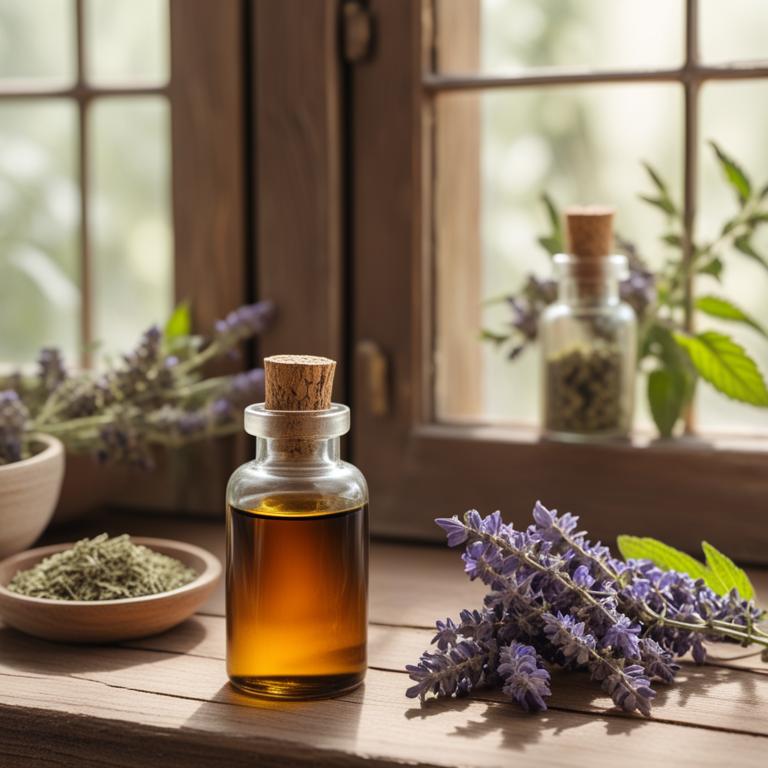
Vitex agnus-castus tinctures have been used for centuries to treat hormonal imbalance ailments, particularly those related to menstrual irregularities and menopausal symptoms.
This herbal preparation exhibits anti-estrogenic and pro-gonadotropic properties, helping to regulate hormonal balance and alleviate symptoms such as hot flashes, mood swings, and irregular periods.
The bioactive constituents present in Vitex agnus-castus tinctures, including iridoid glycosides like aucubin and agnuside, are responsible for its therapeutic effects, which help to normalize luteinizing hormone (LH) levels and stimulate the pituitary gland to produce more gonadotropin-releasing hormone (GnRH).
The benefits of using Vitex agnus-castus tinctures to treat hormonal imbalance ailments include reduced symptoms, improved mood, and enhanced overall well-being, making it a popular natural remedy for women experiencing hormonal imbalances.
Related Study
According to "Archives of gynecology and obstetrics", Vitex agnus-castus tinctures for hormonal imbalance show a significant reduction in PMS-related symptoms, with a 42.5% score reduction in the main effect parameter (Moos' menstrual distress questionnaire) after treatment with 20 mg native extract per day for 3 menstrual cycles.
6. Avena sativa tinctures
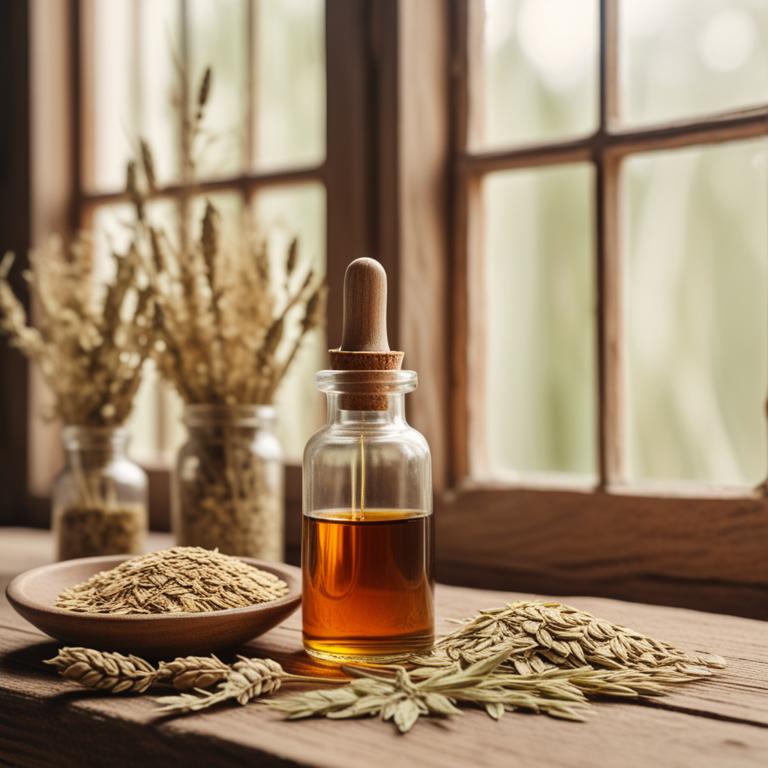
Avena sativa tinctures have been traditionally used to treat hormonal imbalance ailments, particularly those related to menopause and premenstrual syndrome (PMS), due to their calming and balancing effects on the endocrine system.
The bioactive constituents present in Avena sativa, including avenacosides and avenanthramides, help to reduce stress and anxiety, promoting a sense of calmness and relaxation, which in turn helps to regulate hormonal imbalances.
By alleviating symptoms such as hot flashes, mood swings, and sleep disturbances, Avena sativa tinctures provide a natural and non-pharmacological approach to treating hormonal imbalance ailments.
Regular use of Avena sativa tinctures has been reported to offer numerous benefits, including improved sleep quality, reduced anxiety and stress levels, and enhanced overall well-being.
7. Astragalus membranaceus tinctures

Astragalus membranaceus tinctures, a traditional herbal remedy, have been used to treat hormonal imbalance ailments by regulating the body's endocrine system.
The anti-inflammatory and antioxidant properties of Astragalus membranaceus tinctures help to reduce stress and promote balance in the body's hormonal system, leading to improved overall health.
The bioactive constituents, including polysaccharides, flavonoids, and saponins, in Astragalus membranaceus tinctures have been shown to modulate the hypothalamic-pituitary-adrenal axis, thereby helping to alleviate symptoms of hormonal imbalance.
By using Astragalus membranaceus tinctures, individuals can benefit from improved hormonal balance, reduced stress levels, and enhanced overall well-being, making it a valuable natural remedy for treating hormonal imbalance ailments.
8. Curcuma longa tinctures

Curcuma longa tinctures, derived from the root of the turmeric plant, have been traditionally used to treat hormonal imbalance ailments due to their anti-inflammatory and antioxidant properties.
The bioactive constituents, including curcumin, demethoxycurcumin, and bisdemethoxycurcumin, in these tinctures help to modulate hormonal balance by inhibiting the production of pro-inflammatory enzymes and cytokines.
By reducing inflammation and oxidative stress, Curcuma longa tinctures help to alleviate symptoms associated with hormonal imbalance, such as mood swings, hot flashes, and sleep disturbances.
The benefits of using Curcuma longa tinctures to treat hormonal imbalance include improved overall well-being, reduced symptoms, and a natural, non-pharmacological approach to maintaining hormonal balance.
9. Ginkgo biloba tinctures

Ginkgo biloba tinctures have been traditionally used to treat hormonal imbalance ailments, such as polycystic ovary syndrome (PCOS), due to their ability to regulate and balance hormonal fluctuations.
The bioactive constituents of Ginkgo biloba, including flavonoids and terpenoids, possess anti-inflammatory and antioxidant properties that help to alleviate symptoms of hormonal imbalance.
By improving blood circulation and reducing oxidative stress, Ginkgo biloba tinctures can help to regulate menstrual cycles, reduce androgen levels, and improve insulin sensitivity, making it an effective herbal preparation for treating hormonal imbalance.
The benefits of using Ginkgo biloba tinctures for hormonal imbalance include improved overall health, reduced risk of metabolic disorders, and enhanced fertility, making it a valuable natural remedy for individuals suffering from hormonal imbalance ailments.
Related Study
According to "The journal of sexual medicine", Ginkgo biloba tinctures may be suggested for arousal disorder in female sexual dysfunction (FSD) studies, but there is a need for more clinical studies to confirm its efficacy and safety for this purpose.
10. Paeonia lactiflora tinctures
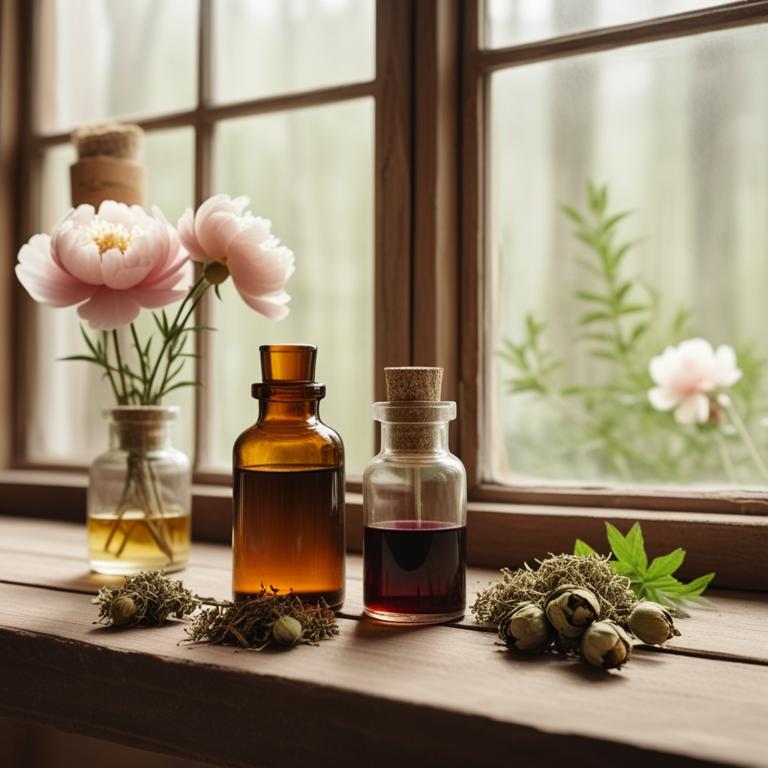
Paeonia lactiflora tinctures have been traditionally used to treat hormonal imbalance ailments, particularly menopausal symptoms and premenstrual syndrome.
This herbal preparation's properties, including its anti-inflammatory and antioxidant effects, help to alleviate symptoms such as hot flashes, mood swings, and sleep disturbances.
The bioactive constituents of Paeonia lactiflora, including paeonol and paeoniflorin, have been shown to modulate the body's hormonal balance by reducing stress and anxiety, thereby helping to regulate menstrual cycles and alleviate symptoms associated with hormonal imbalances.
By using Paeonia lactiflora tinctures, individuals can experience benefits such as improved sleep quality, reduced anxiety and stress levels, and a decrease in the severity of menopausal symptoms.
11. Berberis vulgaris tinctures
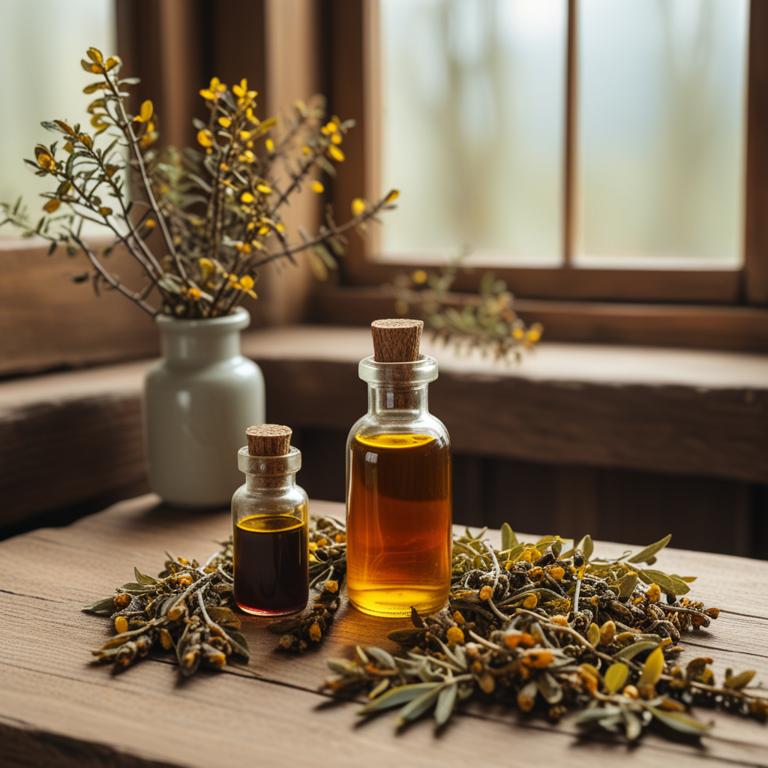
Berberis vulgaris tinctures have been traditionally used to treat hormonal imbalance ailments such as polycystic ovary syndrome (PCOS) and menopause symptoms, due to their estrogen-regulating properties.
The herbal preparation helps to treat this ailment by normalizing the hormonal balance, reducing androgen levels, and alleviating symptoms like acne, hirsutism, and mood swings.
The bioactive constituents of Berberis vulgaris tinctures, including berberine, palmitic acid, and other alkaloids, contribute to its therapeutic effects by inhibiting the growth of androgens and regulating the expression of estrogen-related genes.
The benefits of using Berberis vulgaris tinctures to treat hormonal imbalance ailments include reduced symptoms, improved menstrual regularity, and enhanced overall well-being.